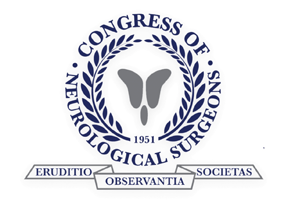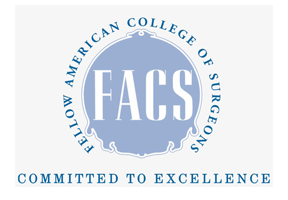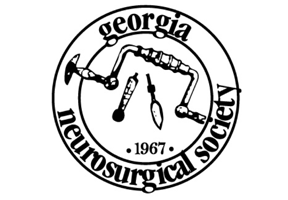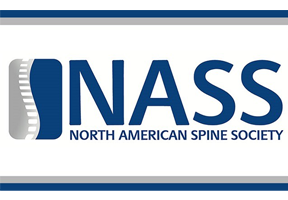Spine Procedures
Surgical Options for Treatment
Often, surgeons will have to perform a combination of procedures when addressing spine problems. For example, many patients need some of the spinal bone or joints removed in addition to a fusion. The doctor will request diagnostic imaging, such as, an MRI, CT Scan, or Mylogram as well as conducting a thorough evaluation of the patient’s symptoms to determine what course of action will provide the best possible outcome. At GNI, our surgeons perform the following procedures:
Minimally Invasive Procedures:
Many spine procedures (even fusions) can now be performed using minimally invasive skills and the latest technology during which the surgeon operates through surgical tubes with the aid of microscopic video cameras to access the deep spinal areas needing treatment. Additional benefits include less muscle movement and retraction which mean less trauma to the surgical area and less anesthesia is used because the procedures are quicker to perform.
Decompression:
This term actually refers to a number of surgical techniques which are all aimed at freeing up space in the spine to alleviate nerve compression. Decompression methods include: laminectomy, laminotomy, lamioplasty, foraminectomy, foraminotomy, and discectomy. The best method will depend on several factors including which spinal level(s) needs decompression, the elements that are causing the problem, the stability of the spine and the experience of the surgeon.
Discectomy/Microdiscectomy:
Discectomies are also performed when there is a problem with one vertebral disc that has herniated. These procedures can be cervical (neck), thoracic (upper back), or lumbar (lower back) and involve the removal of either the entire disc or the portion of the disc that is bulging into the nerve and causing the problems – if possible, the healthy portion of the disc will remain intact. Depending upon the location of the problem, the incision will be made either in the front or back of the spine.
A minimally invasive procedure, a microdiscectomy is exactly same as a discectomy (see above); however, in this instance, the surgeon will use smaller incisions and high powered microscopic equipment enabling these cases to be performed on an outpatient basis. Through the use of magnification, the surgeon is able to carefully dissect tissues and remove the portion of the herniated disc material without dissecting the muscles, so recovery from this treatment is relatively short.
Foraminotomy/Foraminectomy:
(Both terms may be used for the same procedure) The foramen is the tunnel in the vertebrae of the spine through which the nerve root exits from the spinal canal on its way to a specific organ or area of the body. When the tunnel gets narrowed the nerve may be pinched or irritated creating nerve pain and dysfunction. This condition can be referred to as spinal stenosis, lateral disc herniations, or facet arthritis. The process of removing bone and soft tissue to enlarge the nerve passage is called a foraminotomy. This surgery is commonly performed with other procedures, such as a laminectomy, for an overall decompression of the spinal canal. During this surgery, specific medical instruments called Kerrison Rongeurs are used to remove portion of bones from the laminae facet. When the surgery involves removing a large amount of bone and tissue it may be called a forminectomy. Often this procedure will require a fusion procedure as well to fully correct the problem.
Kyphoplasty:
A relatively new, minimally-invasive procedure, kyphoplasty is a technique of reinforcing the spinal column with bone cement in the case of bone fracture or collapse due to osteoporosis or bone destruction as a result of tumors or other trauma. The purpose is to not only stabilize the spine but also to replicate the original height and structure of the damaged vertebra.
With the assistance of a flouroscope, an x-ray/imaging device, the surgeon will insert a special needle into the collapsed vertebra. Once in place, a balloon will be passed into the vertebra and filled with a liquid solution to create the cavity within the area. Once the desired space is achieved, the balloon is deflated and withdrawn and bone cement is injected into the space. The specialized cement hardens quickly and typically patients are able to go home shortly thereafter.
Laminectomy/Laminotomy/Laminoplasty:
In cases where the patient suffers from spinal stenosis, a laminectomy, (also called a decompression), may be the course of action. Here, the nerves may be compressed throughout the spine because stenosis is a degenerative disease that can affect more than one level. Each vertebra has two portions of vertebral bone that extend over the nerve roots in the back of the spine. These small, flat bones are called the lamina, and during this operation, the surgeon will remove all or a significant portion of the lamina on affected levels to give the nerve root more room. In addition, the facet joints may also be enlarged where the nerve leaves the side of the spine, so they may be trimmed or cut down as well. If the condition is extensive the surgeon may also have to perform a fusion for stability. In a laminotomy, a smaller portion of the lamina bone(s) are removed; this is generally the case when dealing with a herniated or bulging disc. The surgeon must perform a laminotomy to gain access to the damaged disc.
In a laminoplasty, the laminae, which act like a set of double doors, are split down the middle and hinged open. They are then kept open through the implementation of plates or bone struts. A laminoplasty, which is most often performed in the cervical spine, can be done over several levels and lead to significant enlargement of space for the nerves to travel. This may be a good alternative to an anterior cervical spinal fusion and decompression.
Scoliosis Correction:
Scoliosis, meaning a curvature of the spine, is a spinal deformity which can affect many different ages. This condition is very complex and most cases are highly specific to the individual patient. There are many different types of scoliosis across a wide range of personal characteristics, so there aren’t really simple guidelines or techniques that can be applied to all. The ideal plan of direction will depend on a number of patient factors, such as, age, size, number of levels, and type/stiffness of the curve, in addition to the surgeon’s expertise.
Spinal Fusions:
In some cases, the decision must be made to limit the mobility of the spine on more than one level. In these instances, a lumbar spinal fusion is suggested by the surgeon for the best possible outcome. Fusions may be recommended for a variety of back pain problems, such as, degenerative disc disease or spinal stenosis.
Generally speaking, the surgeon will perform a combination of procedures if a spinal fusion is required. For example, a laminectomy may be the course of action to solve the nerve compression, but the physician will go a step further and perform a fusion to keep everything in place once the laminectomy is done. Here the spinal canal is decompressed and screws and rods are placed to fuse two or more back levels together. Additionally, small bits of bone tissue are placed either in front of or along the back of the spine so that the vertebrae from more than one level will grow together. The treatment is designed to eliminate movement in the segment of the spine that has been fused together, thereby decreasing or eliminating the back pain created by motion and nerve compression.
*** It should be noted that the spine is not actually fused at the time of the surgery. The procedure creates a condition where the spine will begin to fuse itself by growing bone to create a solid mass, a process that starts about three months post surgery and can ultimately take up to a year to complete.
Mini-Indirect Decompression & Fusion
The surgeon uses the Stabilink Implant to decompress the spine by attaching the device to either the patient’s lamina or spinal process. This procedure helps to restore the decompressed vertebra(e) to its original height which opens the spinal canal, alleviates nerve impingement, and the pain associated with it. The surgery is minimally invasive and does require entry into the spinal canal which provides a major reduction in potential complications. Additionally, the surgeon can stack the device to be utilized on multiple levels in the thoracic or lower lumbar regions. A major benefit of this technique is that is does not require the implantation of screws or peek cages.
ACDF – Anterior Cervical Discectomy and Fusion:
Anterior cervical discectomy and fusion (ACDF) is a surgery to remove a herniated or degenerative disc in the neck. An incision is made in the throat area to reach and remove the affected disc(s); by going in through the front of the body the surgeon is able to avoid the spinal canal, nerves and stronger neck muscles in the back. Discectomy literally means “cutting out the disc”; once the disc is removed a peek cage is inserted into the empty space to give the spine stability for the missing disc. The surgeon will also put bone grafting material into the space which also begins the process of the levels fusing together the bones above and below where the disc that was removed. The peek cage(s) and vertebra(e) are fixed in place with metal plates and screws.
PLIF – Posterior Lumbar Interbody Fusion:
A PLIF is a surgical technique that involves removing an intervertebral disc and creating a spinal fusion in the lumbar spine area of the back. This procedure is usually performed for disc problems at one level, such as a recurrent herniated disc, instability of the spine, or a chronic back problem related to specific disc rupture. The surgeon will perform a laminotomy to gain access to the disc that is causing the problem. Once the disc is removed, the level will be packed with bone tissue, bone block or a medical device to replace the old level that is no longer there. Additional bone tissue will also be placed either in front of or behind the spine for the fusion process to begin. Medical devices or cages may also be implanted to help ensure stability.
TLIF – Transforaminal Lumbar Interbody Fusion:
Basically the same procedure as a PLIF (see above), but the approach and removal of the disc is from a more lateral (side) angle, and in some cases only one side of the disc needs to be exposed, right or left, in order to perform the procedure.
XLIF (Extreme Lateral Interbody Fusion & OLIF (Oblique Lateral Interbody Fusion)
In this procedure, the surgeon gains access to the spine by entering the body through the patient’s side rather than through the back or front. This approach avoids major nerves and muscle mass that are located between the traditional back or front incisions and spinal column, eliminating the likelihood of nerve and muscular damage. After access to the spine is made the traditional steps of disc removal and device implantation are similar to traditional interbody fusions described above. Both procedures may be performed on lumbar levels and are options for treating degenerative disc disease, spondylolisthesis, foraminal stenosis, or scoliosis.
ALIF (Anterior Lumbar Interbody Fusion):
Often, patients may have a problem with degenerative disc disease on only one vertebral level which means there isn’t a great deal of spine instability, in these cases, surgeons may perform an ALIF which uses an anterior (or front) approach through the abdominal area to completely remove the damaged disc. Upon removal, the space is filled with bone to achieve a spinal fusion (sometimes more stability will be ensured by using a cage or another medical device as well). The significant advantage with an ALIF is that the abdominal muscles run vertically and are easily retracted; therefore, they do not have to be dissected. Additionally, with an ALIF the back muscles and nerves remain undisturbed.
Artificial Cervical Disc Replacement:
Cervical disc arthroplasty, sometimes known as Mobi-C surgery, is a very specialized disc replacement surgery designed to replace up to two levels of damaged discs in the neck (cervical spine) while preserving natural range of motion and function, and providing a shorter postsurgical recovery. This procedure removes the diseased disc between the bones and replaces it with a mechanical disc device that mimics the function of the disc. The benefit of an artificial disc is that it retains the natural rotation of the vertebrae in the neck, which would otherwise be locked together in a traditional spine fusion surgery. By preserving motion, this lessens the risk that other adjacent segments break down as well.
SI Joint Fusion
This is a minimally invasive surgical procedure that utilizes the Mazor Robotics system to fuse and stabilize the SI (sacro-iliac) Joint, linking the pelvis to the lowest part of the spine. This quick treatment only requires the implantation of two hollow, threaded cages across the SI joint. The design of the device allows for bone grafting material to be delivered into the area at the time of treatment which helps to ensure fusion success. The GNI system also allows for the incision to be made posterior rather than lateral which allows for easier access in delivering the device while also avoiding the muscle mass found in the patient’s buttocks.






